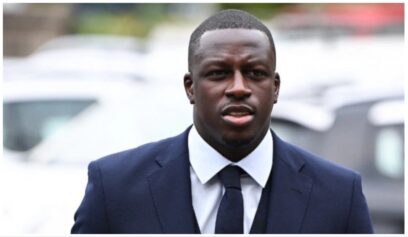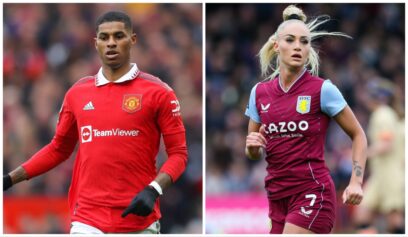The Portland Thorns midfielder Midge Purce managed to balance school while chasing her soccer dreams.
No one ever says that star soccer players are built at Harvard University.
When most people toss the Crimson name around, they are more quick to mention prominent doctors or CEOs than any pro athletes who’ve studied within those ivy-laced halls.
But let’s picture a different scenario for a moment:
In the fall of 2013 — about four years before she became a pro soccer player — Margaret “Midge” Purce was a freshman who had moved to Cambridge a bit unsure if Harvard was going to help her achieve all of her goals.
Academics-wise, there was no question. She was on the right track to become a doctor. But after playing soccer on youth national teams throughout high school, she had developed World Cup aspirations and Olympic dreams.
Her speed on the ball and tenacious athleticism had wowed recruiters from Division I NCAA champions Stanford and Duke — schools that most wannabe pros would kill to play for. Harvard, on the other hand, had made some NCAA tournament appearances but frequently struggled to make it past the first round.
Choosing Harvard meant Purce wouldn’t always be facing the toughest competition. It meant that her youth national team peers who went to other D-I powerhouses might get ahead and have a greater chance of being noticed.
And yet, when Harvard coach Ray Leone called upon her to put on the Crimson jersey, she couldn’t pass him up.
“It’s kind of silly to have the opportunity to attend probably one of the best institutions in the world and say, ‘No’,” Purge told the Shadow League.
Any time doubts clouded her Gold Medal dreams, words from her father echoed like a mantra: “If you are good enough, they’ll find you.”
Purce was determined to make an impact no matter where she went.
That freshman season, she scored 11 goals in 18 games and was named Ivy League Rookie of the Year and Player of the Year. By the end of her junior season, she had scored 30 goals and lead her squad to the NCAA tournament twice.
She really found her edge during the off-seasons. In the spring, you could often find her running extra drills with her coaches. She’d roll out of bed at 4:20 am to run the fields before the football team came out to practice.
Some school nights, you could find her holed up at the Harvard Law School library, surrounded by leatherbound spines, her nose deep in psychology books. She knew that strategically juggling the early mornings and late nights was all going to be worth it. Because she understood what it took to accomplish all of her goals — to overcome the odds.
Her dad had taught her how ever since she was a kid.
https://www.instagram.com/p/BfXCvi1F_bs/
The “Midge” Mentality: Play Big
In Olney, Maryland, Purce grew up playing sports outside with her father, James, and her brother, JP. She fondly remembers the days sprinting around the local track, chasing her old man during his exercise routine.
“My dad was really active,” she said. “He would take me [out] to run and I would try to keep up with him … like run across the track to catch him after he passed me.”
Shortly after James got his son playing organized soccer, Margaret couldn’t wait to jump in. When she joined her first team, she fell in love with the game. And it wasn’t long before the game gave her a name: Midge.
“I was really tiny child,” said Purce. “One day, people were just like joking around and this girl said that I was super short and called me a ‘midget’… and it just stuck since then.”
At first, “Midge” wasn’t the most endearing nickname — especially not for someone who prided herself on being an athlete. But her father told her that her size wasn’t a disadvantage at all:
“If you play big and you are big,” he’d tell her.
With her quick feet, Midge often outpaced her opponents on the field and found the back of the net. It was certainly no small feat when she came up with those big goals.
“I don’t recall feeling tiny,” she said.
Of course, Purce grew a couple of inches (she’s 5-foot-6 now) and developed as a player. She took her “Midge mentality” all the way to youth national team tournaments. Purce made several appearances with the U-17 team.
In 2012, she was the second leading scorer at the CONCACAF tournament in Guatemala. She was the first Ivy League player to suit up for the U-17 World Cup in Azerbaijan.
During her senior year at Harvard in 2017, she would make her second appearance at a women’s youth world cup with the U-23 squad. By then, it was clear that Purce had the passion it took to play on an international stage.
https://www.instagram.com/p/BmWN7qMgv73/
But James, a Howard grad, always emphasized that education came first. When Purce told her dad that she wanted to play in the National Women’s Soccer League (NWSL). He wasn’t exactly thrilled.
“He was so hesitant,” she said. “He was like, ‘No you have to do something else. You can’t just wither away.’”
James had expressed a common concern that many Ivy League parents have when their kids want to pursue an athletic career post-college. Some parents question if playing sports is a good use of their child’s degree; perhaps that path would hurt them later on in life.
And for a young woman, choosing to play professional soccer is an unconventional move in a society that’s still learning how to value women’s sports.
Aspiring female soccer players often have to face major financial risks. There’s no promise that they will become a superstar on the national team and make the big bucks. In 2017, the rookie salary in the NWSL was only $15,000 — way less than what most Harvard seniors would make in their entry level jobs ($70,000 according to a recent survey).
As graduation neared, Purce had lost her original desire to become a doctor. But she looked to her brother PJ, who was enjoying his time in law school and decided that she would follow in his footsteps.
That put her father at ease.
“He was like, ‘I completely support you because you’re still moving forward and you have something else that you’re going to do,’” said Purce.
During Purce’s senior season, she notched 12 goals in 17 games. She helped lead the Crimson to their third Ivy League championship and was nominated as a semi-finalist for the MAC Hermann Trophy, which is basically the Heisman of soccer.
In the NWSL draft, she was the 9th pick overall and was set to play with the Boston Breakers that spring.
One day in July — in between games and training — she was chilling in her living quarters at Harvard when she received an email on her phone. It was from U.S. Soccer. At first, she didn’t think anything of it; she thought it was just another youth national team training camp. But what she read next caused her to drop her phone:
“It was like ‘Congratulations! You’ve been called up to the full team,’” said Purce. “I immediately called my dad and I was like ‘Dad, you cannot believe this!’”
Coach Jill Ellis wanted her to report to camp ahead of the Tournament of Nations. She’d be the first Harvard player to ever earn such an honor.
“If you’re good enough, they’ll find you,” James had always said.
Purce teared up when they finally did.
https://www.instagram.com/p/Bj55TtkACJP/
No Need for Outside Validation
It’s been three years now since Purce started playing in the NWSL, and although her soccer career has been rewarding thus far, it hasn’t been the smoothest.
Right before the kickoff of her second pro season in 2018, she had to deal with the sudden folding of the Boston Breakers. Luckily, the Portland Thorns signed her, and by the end of the season, she became a consistent midfielder in their starting lineup.
That spring, she even received a second call-up to the USWNT for a friendly against China. But unfortunately, she had to leave training camp early due to an ankle sprain.
https://www.instagram.com/p/BinWBjMgRpv/
She’ll tell you that the greatest challenge about transitioning from the Ivy League to the NWSL wasn’t necessarily adjusting to the pace or tactics of the game. It was about being mentally strong enough to handle all of the ups and downs that come with being a professional athlete.
“I think in this league there’s a lot of politics and there are a lot of dynamics going on behind the scenes that people don’t understand,” Purce said. “And then just sports in general, [there are] injuries, and you know, not being able to control everything. It’s really easy to not perform at your best.”
Thankfully, the older players have been there to support her through it all.
“Honestly, the veterans in the game are so smart and they’re so willing to teach younger kids,” said Purce. “I can’t tell you how much I’ve learned from A.D. Franch, Meghan Klingenberg, even Tobin [Heath]. They all take a lot of time to explain things and in a way [so] that you understand.”
While Purce says playing in the NWSL has been “the best thing ever”, she still has her eye on making the U.S. World Cup roster within the next four years. She realizes that some people may think her goal is a pipe dream — that even some of her Harvard peers don’t fully understand why she is doing what is was doing. At an alumni event, someone once asked her if she got “bored” just playing soccer every day.
Purce slapped back.
“I was like ‘Do you get bored at your desk job?’” she said. “I have honestly the most fun every day.”
https://www.instagram.com/p/BvXZCN8lTx0/
“Somewhere along the line, I realized that validation [from others] is so irrelevant and that I do believe that I can do it,” she added. “I think I got that from my dad.”
U.S. Soccer fans probably won’t see her on the World Cup roster in France come June.
But when the national team players leave their clubs to represent their country this summer, Purce will have a greater chance to shine in the NWSL — to prove why she should be on the next World Cup roster. As her Twitter handle suggests, Midge is ready to give “100Purcent” in 2019 and beyond.
“If I perform at my best possible ability, everything else will fall into place.”



